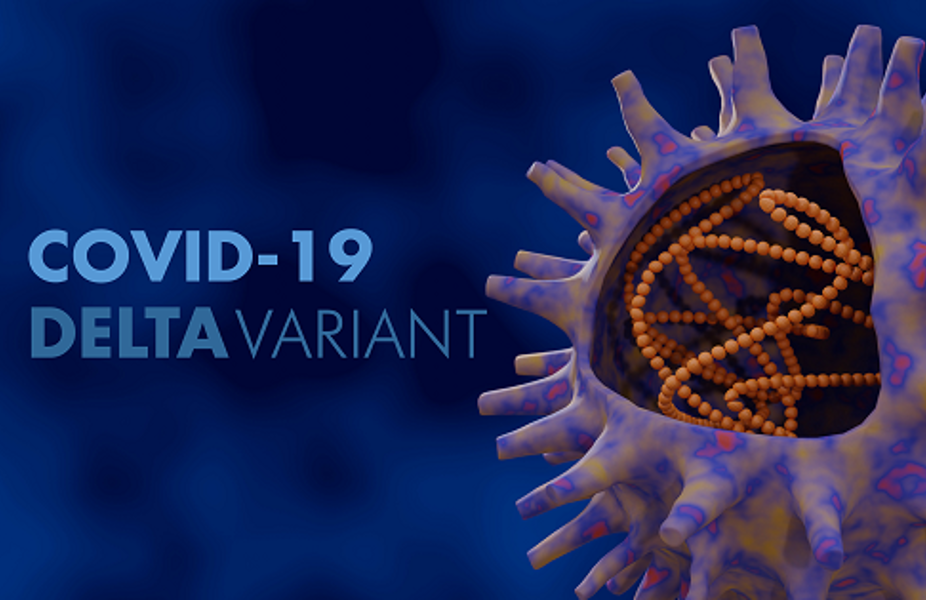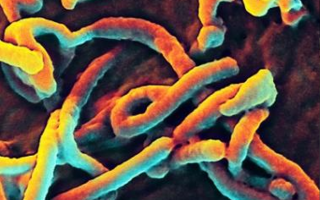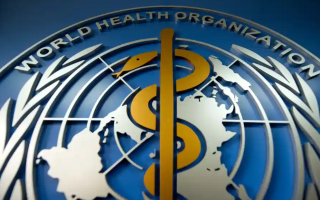By Ashley Hagen, M.S.,
American Society for Microbiology
To a world that has become weary, yet accustomed to playing defense against SARS-CoV-2, evolution of the Delta variant is both unwelcome and unsurprising. Delta, or B.1.617.2, was first identified in India in Dec. 2020. Within a matter of months, this particular variant spread to over 98 countries around the world, becoming the dominant variant in more than a dozen of those countries, including India, the U.K., Israel and the United States. Delta is now responsible for more than 83% of COVID-19 cases being reported in the U.S. and, with only 48% of the total U.S. population fully vaccinated, conditions are ripe for continued evolution and spread of SARS-CoV-2. Three foundational questions continue to drive research with each new variant that’s identified.
1. How Contagious Is the Delta Variant?

Data indicate that Delta is 40-60% more transmissible than Alpha and almost twice as transmissible as the original Wuhan strain of SARS-CoV-2. Furthermore, significantly more viral particles have been found in the airways of patients infected with the Delta variant. A Chinese study reported that viral loads in Delta infections were ~1,000 times higher than those in infections caused by other variants. In response to this information, the World Health Organization (WHO) regards Delta as “the fastest and fittest” variant so far.
2. Is the Delta Variant More Dangerous than Other Variants of Concern?
According to surveys conducted in the U.K., where Delta accounts for ~90% of current COVID-19 cases, symptoms of Delta tend to be a little different than other strains, but that does not necessarily mean the associated symptoms are more severe. Fever, headache, sore throat and runny nose are common, while cough and loss of smell are not. Other reports link Delta to more serious symptoms, including hearing impairment, severe gastrointestinal issues and blood clots leading to tissue death and gangrene. Research is ongoing to determine if Delta infection is associated with increased hospitalization and death. One early study assessing the risk of hospital admission in Scotland reported that hospitalization is twice as likely in unvaccinated individuals with Delta than in unvaccinated individuals with Alpha.
Case numbers and hospitalizations are once again on the rise in the U.S., especially in states where vaccination percentages are low and the Delta variant is surging. On July 16, 2021, the Centers for Disease Control and Prevention (CDC) reported a 7-day average increase in new COVID-19 cases of 69.3% and a 35% increase in hospitalizations. Still, it is difficult to determine whether Delta is actually making people sicker than previous forms of the virus or if it is simply circulating amongst more vulnerable populations where case numbers are high, vaccination rates are low and increased stress on hospital systems is impacting patient care and disease outcomes.
What is clear is that the majority of hospitalizations and COVID-19-associated deaths in the U.S. are occurring in unvaccinated people, leading to a chilling warning from CDC director Dr. Rochelle Walensky that “this is becoming a pandemic of the unvaccinated.”
3. Will Vaccines Remain Protective against the Delta Variant?
Studies show that 2 doses of vaccines are effective at preventing hospitalization and death, but neutralization levels of vaccinated sera are lower against the Delta variant compared to the original strain. A study published in the New England Journal of Medicine tested neutralization activity of sera from individuals who had recovered from natural SARS-CoV-2 infection and sera from individuals who had been fully vaccinated with Moderna or Pfizer vaccines against infectious B.1.617.2 virus. Data from the study indicated that, on average, the Delta variant was 2.9 times less susceptible to neutralization than the Wuhan strain, but most convalescent serum samples and all vaccination serum samples showed detectable neutralization activity. As a result, researchers concluded that immunity conferred by mRNA vaccines is likely to be retained against the Delta variant.
These results were supported by research, published in Nature, that evaluated the sensitivity of infectious Delta virus against monoclonal antibodies, convalescent sera and sera developed after vaccination. The study found that some antibodies targeting the N-terminal domain and receptor binding domain of the spike protein (S protein) showed impaired binding and neutralization of the Delta variant. Additionally, convalescent sera, collected up to 12 months post-symptoms from individuals who had recovered from natural SAR-CoV-2 infection, were 4-fold less effective at neutralizing Delta than Alpha. Sera from individuals who were partially vaccinated (had received 1 dose of Pfizer or AstraZeneca vaccine) showed little to no neutralizing activity against Delta. Sera from 95% of those who received 2 doses of either vaccine generated a neutralizing response that was 3-5-fold less potent against Delta than Alpha.
Another study published in the New England Journal of Medicine used a test-negative, case-control design to estimate vaccine effectiveness against symptomatic disease caused by the Delta variant, compared to Alpha. The study, which was conducted in the U.K., reported an 88% efficacy against Delta after 2 doses of mRNA vaccine, but only 30.7% efficacy after 1 dose, which is below the U.S. Food and Drug Administration (FDA)’s 50% efficacy threshold for COVID-19 vaccines.
Initial reports indicated that the J&J vaccine was also effective against Delta, however a new study, not yet peer-reviewed, indicated that sera from a significant fraction of J&J vaccinated individuals showed a 5-7 fold decrease in neutralizing titers, which, according to the study’s mathematical modeling, could result in decreased protection from infection.
Taken together, these data support the importance of full dose vaccination against SARS-CoV-2, but reports of reduced vaccine efficacy against Delta warrant further investigation into breakthrough infections and the possibility of vaccine booster shots. Genomic analysis of isolates from 63 vaccine breakthrough infections in India (not yet peer-reviewed) revealed that B.1.617.2 was the predominant lineage in groups who were partially and fully vaccinated with either AstraZeneca or Covaxin (an inactivated virus-based vaccine developed by Bharat Biotech in collaboration with the Indian Council of Medical Research).
In late July, 2021, the CDC published a report evaluating outbreaks of SARS-CoV-2 that were associated with large public gatherings in Barnstable County, Massachusetts. Out of the 469 identified cases of COVID-19, 346 or 74% of them were breakthrough infections that occurred in people who were fully vaccinated with 2 doses of Pfizer or Moderna, or 1 dose of the J&J vaccine. Genomic analysis revealed that Delta was responsible for 90% of the 133 sequenced breakthrough infections. This information prompted the CDC to recommend the use of masks in indoor public spaces, regardless of vaccination status, in areas where COVID-19 transmission is high. Further research into breakthrough infections that occur after COVID-19 vaccination is needed.
Meanwhile, companies are already developing booster doses to improve efficacy against circulating variants. Pfizer plans to seek FDA authorization for its booster dose, which is expected to elicit stronger neutralization against the Delta variant. However, antibodies alone do not give the whole picture of immune protection. How other vaccine-elicited immune components, such as T cells and B cells, respond when challenged by the Delta variant is still relatively unclear, and conversation about whether booster doses are needed yet are ongoing.
To learn more about the effectiveness of vaccines against Delta and dive deeper into data from the studies mentioned here, tune in to Microbial Minutes, ASM’s monthly video series of trending topics in the microbial sciences.Watch Microbial Minutes
Culpable Mutations of the Delta Variant

Without a doubt, increased transmissibility, coupled with potential increases in disease severity and immune escape, makes Delta especially dangerous. The SARS-CoV-2 spike protein is the main target of COVID-19 vaccines, and most serum neutralizing antibody responses elicited during natural SARS-CoV-2 infection are directed at the receptor binding domain (RBD) of S protein. Therefore, if a mutation (or combination of mutations) causes changes to the S protein that are not recognized by first wave antibodies, immunity developed against the reference strain may be ineffective against the new variant. The SARS-CoV-2 Delta variant possesses a combination of S gene mutations that make it particularly worrisome to scientists, including multiple mutations in the receptor binding domain (RBD), a mutation located near the furin cleavage site and a number of mutations in a vulnerable region of the N-terminal domain known as an “antigenic supersite.”
Receptor Binding Domain
The receptor binding domain is the portion of the spike protein that binds directly to human ACE2 receptors. Delta has 3 RBD mutations. The first, a lysine to asparagine substitution at position 417, is present in some, but not all sequences of B.1.617.2. It is also common to the Beta variant and has been associated with conformational changes to S protein, which may aid in immune escape. The second mutation, a leucine to arginine substitution at position 452, is common to the former variant of interest Epsilon, and is known to increase affinity for ACE2 receptors found on the surface of a variety of human cells, including the lungs. And the third, a threonine to lysine substitution at position 478, is common to the B.1.1.519 lineage, and has been predicted to increase electrostatic potential and steric hindrance, which may further increase RBD/ACE2 binding affinity and enable immune escape.
Furin Cleavage Site
The spike protein consists of a receptor-binding subunit (S1) and a fusion subunit (S2), which must be cleaved from each other to mediate membrane fusion and cause infection. The furin cleavage site is the junction where that cleavage takes place, and Delta contains a proline to arginine substitution (also common to Alpha) near this cleavage site at position 681 that makes the sequence less acidic and causes furin to recognize and cut more effectively. As a result, more spike proteins are primed to enter human cells. Research indicates that less than 10% of spike proteins are primed in the original strain, 50% are primed in Alpha and greater than 75% are primed in Delta. The mutation likely increases viral infectivity and transmissibility; however, it must occur on the background of additional spike protein mutations in order to be consequential.
NTD-Antigenic Supersite
Scientists have identified regions in the N-terminal domain of S protein that are especially vulnerable to antibody recognition and attack, called NTD-antigenic supersites. Delta contains a number of mutations that fall within an antigenic supersite, including a threonine to arginine substitution at position 19, a glycine to aspartate substitution at position 142, deletions at positions 156 and 157 and an arginine to glycine substitution at position 158. Accumulated mutations in antigenic supersites are thought to enhance the virus’s ability to avoid immune detection.

Stopping Transmission Is Key to Controlling Variants
Humanity has its hands full as the virus continues to mutate and evolve potential mechanisms to escape the immune defenses its hosts have worked so hard and sacrificed so much to develop. In addition to the variants of concern currently being monitored, researchers are keeping an eye on a number of variants of interest, including Lambda. When specific mutations (like K417N/T) become fixed in different virus lineages, it is evidence that natural selection may be occurring. According to Dr. Vaughn Cooper, ASM’s Council on Microbial Sciences-elected Board Director and evolutionary biologist, stopping the virus is key. “The more infections, the more chance that mutations will occur and thus the more likely selection will enrich the best mutations to improve the virus,” he explained. Vaccination is the best weapon in the fight to curb transmission.







